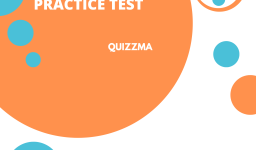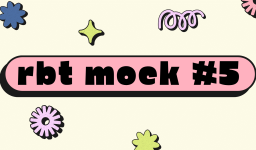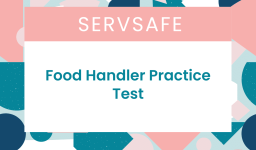Becoming a Certified Nursing Assistant (CNA) is an essential step for those pursuing a rewarding career in the healthcare industry. CNAs provide compassionate and skilled care to patients in various settings, including hospitals, nursing homes, and assisted living facilities.
The CNA certification is a nationally recognized credential that validates an individual’s knowledge and skills in basic nursing care. It demonstrates proficiency in areas such as patient safety, personal care, communication, and fundamental nursing procedures.
Earning this certification opens doors to employment opportunities and serves as a foundation for further career advancement within the nursing field.
Obtaining CNA certification requires passing a state-approved competency evaluation, typically consisting of a written examination and a practical skills assessment. Proper preparation is crucial to ensuring success in these evaluations and ultimately securing the CNA credential.
CNA Practice Test – 100 Questions
Which of the following would be considered an example of battery toward a patient?
Fecal impaction may present with which of the following symptoms?
This pattern of nursing focuses on TASKS and JOBS. Each person has a separate task to do. What pattern would this be?
Which of the following is the most appropriate action when providing perineal care to a patient?
When transferring a patient from a bed to a wheelchair, what is the MOST important safety measure?
An acute illness is controlled but the patient will always have it?
Which of the following is a primary principle of infection control?
A patient with Alzheimer’s disease frequently becomes agitated and confused late in the afternoon and evening. This behavior is known as:
Asthma is an example of what type of illness?
A resident goes to cast there vote for the president of the United States. they are exercising what right?
An NA can give medication and take doctors orders?
You notice a pressure ulcer forming on the heel of a bedridden patient. What is the FIRST action you should take?
HIPAA (Health Insurance Portability and Accountability Act) is best described as a law that:
Which pulse point is commonly used to check a pulse for a patient receiving CPR?
The correct way to remove gloves to prevent contamination is:
A patient is on a fluid-restricted diet. Which of the following tasks falls within the CNA's scope of practice?
What is the most effective way to communicate with a patient who is hard of hearing?
A resident's neighbor comes in and asks you about the residents condition. you, as a CNA, can tell them this Information?
OBRA does all BUT WHICH of the following items?
Negligence is hitting a resident on purpose?
When does the CNA NOT report to the nurse?
How is 2:32pm written in military time?
What quadrant is MOST of the stomach located in?
The toes are distal to the knee compared to the ankle
Which observations does not need to be reported immediately?
According to Maslow's Hierarchy of Needs which of the following needs must be taken care of first?
Medicated shampoo should be kept where?
How many people do you need for a stretcher transfer?
Which of the following is NOT on a MSDS?
Which of the following does NOT help prevent falls?
When providing catheter care, what is the most important step to prevent urinary tract infections?
What is the proper technique for making an occupied bed?
How should you respond if a resident refuses to take their medication?
What is the proper way to brush a bedridden resident's teeth?
How frequently should an incontinent resident be changed and cleaned?
When bathing a resident, what water temperature should be used?
How should you respond if a confused resident tries to leave the facility?
What is an appropriate way to communicate with residents who have hearing loss?
If a resident shows signs of depression, what is the best intervention?
Gait belts should be buckled over the spine
Bedrails are considered a restraint
Restrained residents should be observed every...
As a CNA when should you not use Alcohol-based hand rub?
What is the proper technique for transferring a resident from bed to a wheelchair?
A resident has a stage 2 pressure ulcer. What intervention is appropriate?
How should you respond if a resident strikes out at you during care?
What is the best way to feed a resident who has difficulty swallowing?
While providing foot care, you notice a red, swollen area between a resident's toes. What should you do?
TB, chicken pox, severe acute respiratory are all examples of?
Which of these isolation precautions requires an N95 mask?
Fowler's bed position is often used for our residents. Which one of these is NOT a Fowler's position?
Lateral and dorsal recumbent are the same position
There are 4 different types of bed-making for a medical facility. Which one is done for a resident returning on a stretcher?
Which of these is NOT an OBRA requirement?
Performing oral care for a resident in their bed, you should NOT:
Mr. Jones is unconscious and needs mouth care. As a CNA, you should gather all supplies, then?
Which of the following actions is essential when caring for a patient with a urinary catheter?
When a patient expresses sadness about their health condition, the best response is to:
A patient has been placed on Contact Precautions due to a MRSA (Methicillin-Resistant Staphylococcus Aureus) infection. Which of the following is the most appropriate action for the CNA to take?
The proper technique for washing hands includes:
What is the primary reason for recording a patient's food intake?
When providing a bed bath you should wash from the dirtiest to the cleanest
When removing PPE it should be done in this order: mask, gown, and gloves
What should you NOT do when giving a resident a bath?
You are giving mrs. Jones a back massage. You notice a reddened area. You should massage the bony red spots and apply lotion
You should change the basin water when giving a bath before cleaning the perennial area
When assisting a resident with a tub bath, what should you NOT do?
Attributes such as size, color of skin, grooming, posture, expression, dress, etc. may influence the relationship between you and the patient, family, and coworkers.
When feeding a resident who has difficulty swallowing, what consistency of food should be provided?
What is the proper way to make an occupied bed for a resident?
How frequently should a urinary catheter be changed for an incontinent resident?
What is the best response if a resident exhibits verbally abusive behavior toward staff?
While providing foot care, you notice open areas on a resident's heels. What should you do?
What best describes aggressive communication?
Which of the following is a characteristic of nontherapeutic communication techniques?
What best describes the concept of a comfort zone?
Can pregnant teenagers, people with substance abuse problems such as alcoholism. or clients with eating disorders also be at risk of malnutrition?
How many amino acids make up protein?
HDL & LDL are both part of cholesterol.
What measurement is used for recording the amount of food that a patient ate?
What characterizes a soft hospital diet?
What is a mechanical soft hospital diet?
What is the Standard of Care?
What does "invasion of privacy" refer to?
Patient's medical record (chart) on paper or cpu is a legal document & needs to be guarded.
What pressure measurements are used for blood pressure?
What is the best method to verify that a dish has been cooked to a safe temperature?
Which food item is most at risk of causing salmonella poisoning?
How often should food contact surfaces be cleaned and sanitized?
What is the primary reason for rotating food using the FIFO method?
Which of the following is NOT a TCS (Time/Temperature Control for Safety) food?
While providing morning care, a resident seems depressed and has little appetite. An appropriate CNA response is:
When making an occupied bed, what is the proper technique?
Your Result:
Sorry, no results found.
Please repeat the test and try different answer combinations.
Test Preparation Tips
Preparing for the CNA practice test is essential. These tips will help you succeed.
Study Strategies and Resources for CNA Candidates
- Review the Curriculum: Familiarize yourself with the content areas covered in the CNA certification exam. These typically include basic nursing skills, patient care, safety procedures, and communication techniques.
- Use Reputable Study Materials: Invest in high-quality study guides, textbooks, and practice questions specifically designed for CNA exam preparation. Look for resources recommended by your training program or approved by relevant nursing organizations.
- Take Practice Tests: Utilize practice tests to simulate the actual exam environment and identify areas where you need further study. Our comprehensive CNA practice test provides realistic questions and detailed explanations to reinforce your understanding.
- Join Study Groups: Collaborate with fellow CNA candidates to share knowledge, ask questions, and discuss challenging concepts. Group study sessions can enhance your learning experience and provide valuable insights.
Time Management Advice for the Practice Test
Effective time management is crucial during the practice test to ensure you can complete all questions within the allotted time. Here are some tips:
- Follow the Instructions Carefully: Read and understand the instructions for each practice test section to avoid wasting time or missing important details.
- Pace Yourself: Allocate your time wisely by monitoring the remaining questions and time left. Adjust your pace as needed to avoid rushing through the later sections.
- Skip and Return: If you encounter a particularly challenging question, make a note and move on. You can return to it later if time permits, ensuring you don’t get stuck on a single question.
- Practice with Timed Sessions: Simulate the actual exam conditions by taking timed practice tests to develop your time management skills and identify areas where you may need to improve your pacing.
Strategies for Answering Multiple-Choice Questions Effectively
Multiple-choice questions are a common format in the CNA certification exam. Here are some strategies to approach them effectively:
- Read the Question Carefully: Ensure you fully understand what is being asked before considering the answer options.
- Eliminate Obvious Distractors: Quickly identify and eliminate answer choices that are clearly incorrect or implausible, narrowing your focus to the remaining options.
- Watch for Absolutes: Be cautious of answer choices that use absolute terms like “always” or “never,” as they are often incorrect in the context of nursing care.
- Consider the Context: Evaluate each answer option within the context of the question and the information provided. Look for the most logical and accurate response based on your knowledge and training.
- Guess Strategically: If you’re unsure of the correct answer, use logical reasoning and process of elimination to make an educated guess, as there is typically no penalty for incorrect answers.
Additional Resources
While our comprehensive CNA practice test is designed to provide a realistic simulation of the actual certification exam, supplementing your preparation with additional resources can further enhance your understanding and readiness. Here are some authoritative sources and supplementary materials we recommend:
Authoritative Sources for CNA Exam Preparation
- Your State’s Nursing Board or Regulatory Body Website: Visit your state’s nursing board or regulatory body website (e.g., https://www.ncsbn.org/contact-bon.htm) for up-to-date information on CNA certification requirements, exam details, and approved training programs.
- National Association of Health Care Assistants (NAHCA): The NAHCA is a professional organization dedicated to CNAs and provides valuable resources, including practice tests, study guides, and continuing education opportunities.
- Nurse.com CNA Certification Resources: Nurse.com offers a wide range of CNA certification resources, including online courses, practice tests, and study materials developed by experienced nursing professionals.
Supplementary Study Materials and Practice Resources
- Textbooks and Study Guides: Besides the materials provided by your training program, consider investing in supplementary textbooks and study guides specifically designed for CNA exam preparation. Look for well-reviewed and up-to-date resources.
- Flashcards and Mnemonics: Create or purchase flashcards and use mnemonic devices to help you memorize key terminology, procedures, and concepts more effectively.
- Additional Practice Tests: Seek additional practice tests from reputable sources to familiarize yourself with the exam format and question types.
- Skills Demonstrations: If possible, practice hands-on nursing skills with guidance from experienced instructors or through video demonstrations to improve your practical abilities.
Let us know if this was helpful. That’s the only way we can improve.



